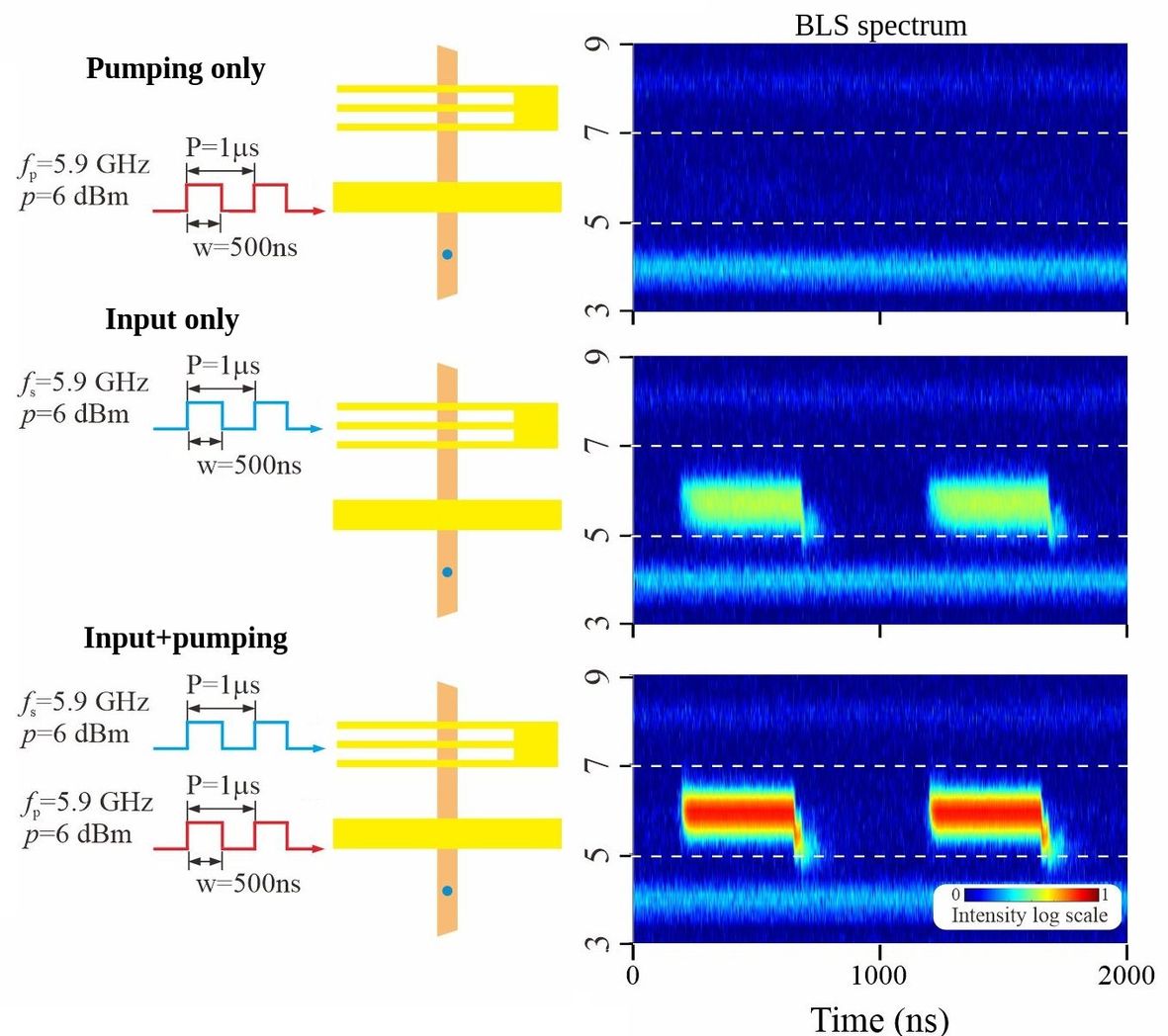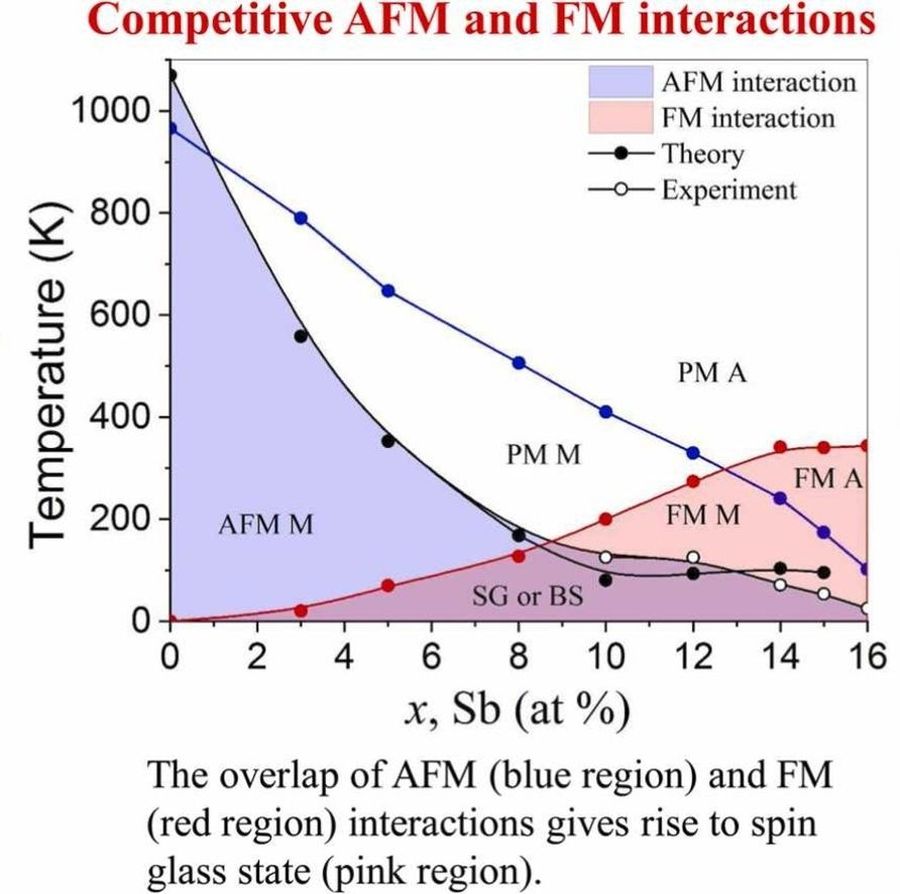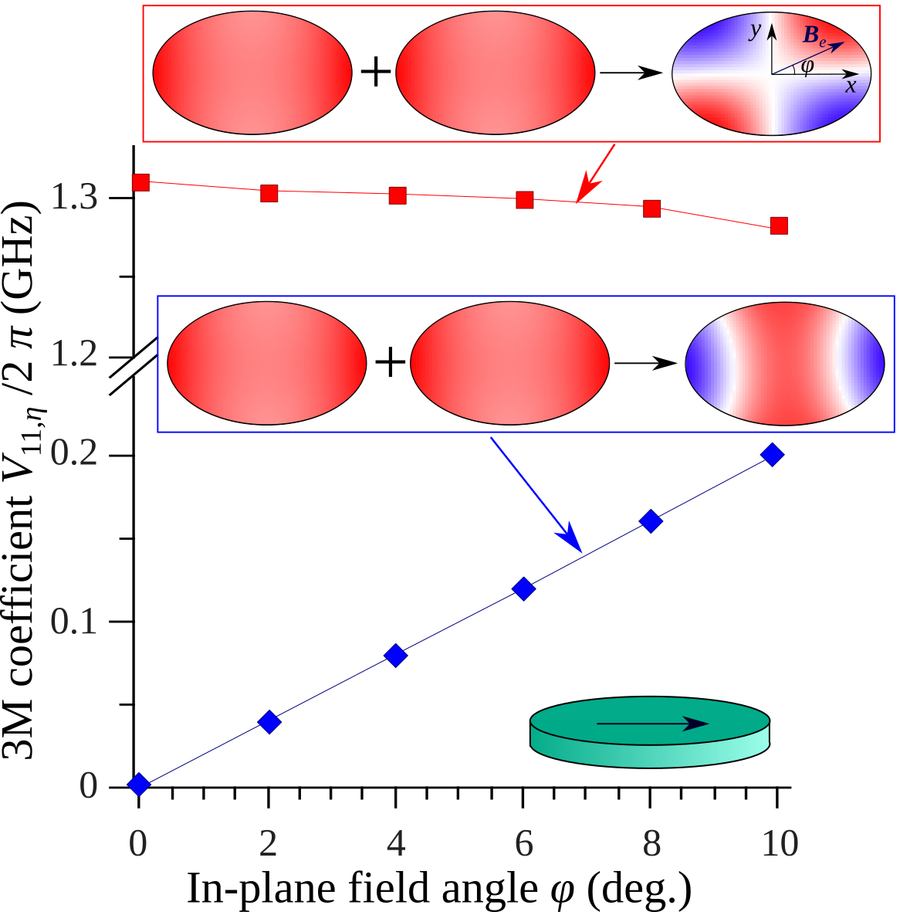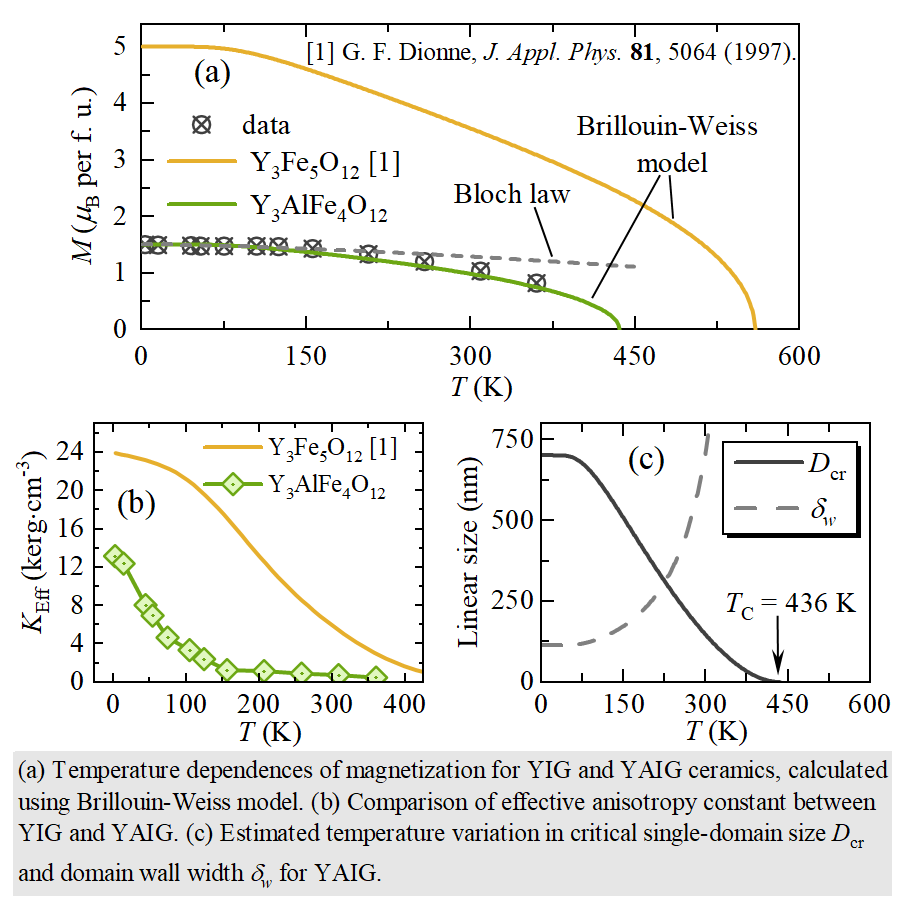Magnonic repeater
 |
The problem of the loss compensation and correction of stochastic deviations in the amplitude and phase of spin-wave signals is one of the most crucial towards the development of integrated circuits of all-magnon logic, in which information is processed entirely in the magnon domain, which dramatically reduces parasitic energy losses. In collaboration with colleagues from University of Vienna, Technical University of Rhineland-Palatinate and Huazhong University, a magnonic repeater based on the phenomenon of bistability and foldover for spin waves excited in perpendicularly magnetized iron- yttrium garnet (IYG) waveguides was proposed and implemented. Due to the small size of the waveguide (1 μm wide), it was possible to achieve a giant bistability region of 1.1 GHz width when spin waves are excited by a microstrip antenna, in which two stable magnon states with high and low amplitudes exist. The input signal (from another antenna or from a preceding element of a magnon circuit) is a trigger that switches the repeater from a low-amplitude to a high-amplitude state due to the effect of a nonlinear frequency shift of spin waves. This switching results in the amplification of the retransmitted spin wave compared to the input one, which in our experiments reaches 6 times. In addition, the amplitude and phase of the output signal are fully determined by the repeater and do not depend on the input signal parameters, i.e., the input signal is not only amplified but also cleaned of phase and amplitude errors. Our results make it possible to simplify and improve the reliability of the design of future integrated magnonics circuits. Q. Wang, R. Verba, K. Davídková, B. Heinz, S. Tian, Y. Rao, M. Guo, X. Guo, C. Dubs, P. Pirro, and A. V. Chumak, All-magnonic repeater based on bistability, [Nat. Commun. 15, 7577 (2024)]. |
Magnetic properties of Ni50Mn50-xSbx alloys
 |
This study examines the magnetic properties and temperature-composition phase diagram of the Ni50Mn50-xSbx alloys. The addition of Sb into the antiferromagnetic Ni50Mn50-xSbx alloy introduces ferromagnetic interaction, resulting in a sudden decrease in the Neel temperature. The characteristic regions of ferromagnetic (FM) and antiferromagnetic (AFM) interactions were determined on temperature-composition phase diagram, as well as compositional dependence of Neel temperature was computed. Increase of Sb content gives rise to an interplay between AFM and FM interactions, leading to the emergence of a spin glass-like state. We identified six distinct magnetic phases in the Ni50Mn50-xSbx system, encompassing AFM, paramagnetic, and FM martensite, as well as spin glass, and paramagnetic and FM austenite. Importantly, this behavior may extend to other Ni50Mn50-xZx (Z =In, Sn) alloys, where addition of Z elements leads to the introduction of FM interaction. Moreover, a significant impact of magnetic ordering on low-temperature specific heat is demonstrated. Neglecting the magnetic contribution in ferromagnetic phase leads to the overestimation of electronic specific heat coefficient by factor of 2.
|
Controlling three-magnon interaction in magnetic nanostructures
 |
The possibility of efficient control of the intensity and selection rules of three-magnon scattering processes by means of breaking of the magnetic state symmetry in magnetic nanodots in vortex and saturated ground states is demonstrated. For nanodots in the saturated state, the effect of perturbations of all possible symmetries on the three-magnon processes is systematized, and the relation between the symmetry of the modes involved in the three-magnon process and symmetry of the perturbation affecting this process is established. It is found that the characteristic values of effective perturbation fields, which are sufficient to significantly change the nonlinear dynamics, are of the order of 10 mT for nanodots in the saturated state and can be reduced by more than an order of magnitude for vortex-state nanodots. Such fields are not difficult to create by various methods; in particular, a method for creating nanoscale fields of different symmetry using the bistability of a synthetic antiferromagnet nanoelement has been proposed and demonstrated by micromagnetic modeling. Our results are a guide for the design of spintronic nanostructures with controlled nonlinear response.
|
Low-temperature magnetic properties of Al-substituted yttrium-iron garnets
 |
The availability of cryogenic technology for various scientific and industrial applications stimulates the development of new materials and functional elements for use at low temperatures. Yttrium-iron garnet materials are widely used in ultra-high frequency technology; however, their behavior at cryogenic temperatures is largely unexplored. In collaboration with scientists from the Royal Institute of Technology in Sweden and the V. I. Vernadsky Institute of General and Inorganic Chemistry of the National Academy of Sciences of Ukraine, researchers from the V. G. Baryakhtar Institute of Magnetism of the National Academy of Sciences of Ukraine have investigated the transformation of magnetic parameters (magnetic anisotropy constant, exchange stiffness constant, and domain wall width) of aluminum-doped iron-yttrium garnet (Y3AlFe4O12) below room temperature for the first time. They discovered that over a broad temperature range, the effective anisotropy field is smaller than that of unalloyed Y3AlFe4O12. This enables reducing a switching field between different magnetic states, thereby lowering energy consumption of devices based on such materials. These results are important for optimizing the characteristics of low-temperature microwave and spintronic devices. V. Borynskyi, D. Popadiuk, A. Kravets, Y. Shlapa, S. Solopan, V. Korenivski, A. Belous, A. Tovstolytkin. Room- and low-temperature magnetic parameters of Y3AlFe4O12 garnets, [J. All. Comp. 1010, 178320 (2025)]. |



